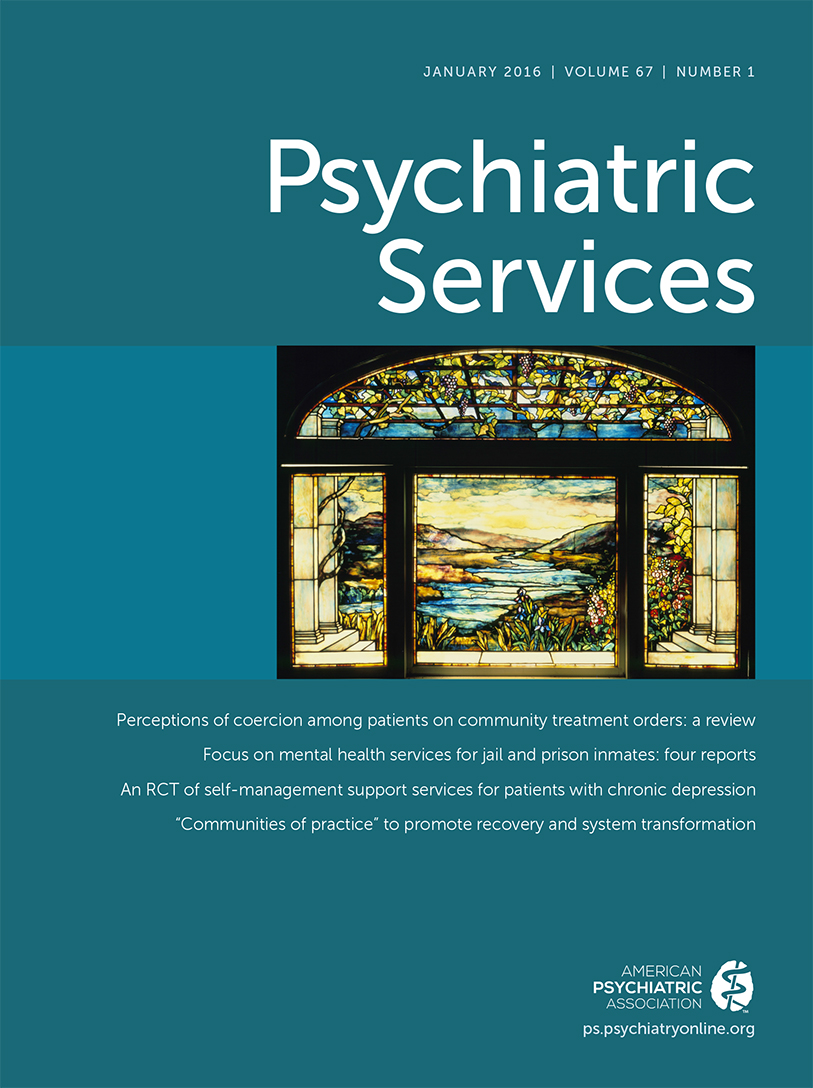Predictors of Clozapine Funding in Southwestern Ontario
TO THE EDITOR: Clozapine is a second-generation antipsychotic that is the most effective antipsychotic in treating refractory schizophrenia and is also effective in treating negative symptoms of schizophrenia. Yet it is often underutilized, partly because of its adverse effects and complications, such as neutropenia that sometimes leads to life-threatening agranulocytosis, myocarditis, and more (1). Of note, it is sometimes prescribed off label —for example, for refractory bipolar disorder. However, reluctance to use clozapine off label has been reported; for example, less than 1% of individuals in a Veterans Affairs study were receiving clozapine off label, compared with other antipsychotics, such as quetiapine, which was used off label for 41.8% of the sample (2). The overall use of clozapine as an antipsychotic has been steadily decreasing in the United States, reaching antipsychotic market share levels as low as 3% in 2008 (3). Clozapine use in Canada is also on the low side; for example, Latimer and colleagues (4) reported a rate of only 6.7% in Quebec. In Ontario, clozapine funding is centralized and hence conducive to research. Our study aimed to describe the diagnostic distribution of centralized clozapine funding requests and approvals in a region of Ontario, Canada, and to test for possible predictors of clozapine funding approval.
A retrospective chart review was conducted on the found 1,268 clozapine funding applications submitted in Southwestern Ontario over 20 years (1992–2011). The application forms reviewed were identical in terms of the variables addressed across the study period. Approval was obtained from Western University’s Research Ethics Board. The kappa coefficient for the interrater reliability of all the variables collected for a randomly selected subsample of 101 forms (based on published norms [5]) was .95–1.00 (p<.001), indicating very strong agreement between the two study raters.
Of the reviewed applications, 1,224 (96.5%) were approved for funding and 44 (3.5%) were refused funding. Although most clozapine funding requests and approvals were for schizophrenia and schizoaffective disorder, some physicians requested clozapine for off-label use, such as for Parkinson’s disease and bipolar disorder. The strongest predictors of clozapine funding approval were the numbers of current (p<.01) and past (p<.001) antipsychotics prescribed for the patient. The likelihood of clozapine funding approval increased (odds ratio=1.18) when the number of past antipsychotic medications was equal to or greater than two. A history of agranulocytosis and cumulative length of hospitalization had a significant effect (p<.001) on the likelihood of receiving clozapine funding approval. Approval was significantly more likely for patients assessed as markedly ill with positive symptoms (p<.05) than for patients with less severe positive symptoms. Approval was more likely in recent years. Other clinical factors were not associated with clozapine funding approval versus refusal.
In summary, clozapine was requested and approved for various indications beyond (refractory) schizophrenia. Indicators of illness severity were associated with clozapine funding approval, and approval was more common in recent years. This study’s design and setting may not allow causal inference and generalization to other jurisdictions. More research on various indications for clozapine use as well as its cost-effectiveness is needed.
1 : 11-year follow-up of mortality in patients with schizophrenia: a population-based cohort study (FIN11 study). Lancet 374:620–627, 2009Crossref, Medline, Google Scholar
2 : Off-label use of antipsychotic medications in the Department of Veterans Affairs health care system. Psychiatric Services 60:1175–1181, 2009Link, Google Scholar
3 : Current status of clozapine in the United States. Shanghai Archives of Psychiatry 24:110–113, 2012Medline, Google Scholar
4 : Underprescribing of clozapine and unexplained variation in use across hospitals and regions in the Canadian province of Québec. Clinical Schizophrenia and Related Psychoses 7:33–41, 2013Crossref, Medline, Google Scholar
5 : The kappa statistic in reliability studies: use, interpretation, and sample size requirements. Physical Therapy 85:257–268, 2005Medline, Google Scholar



